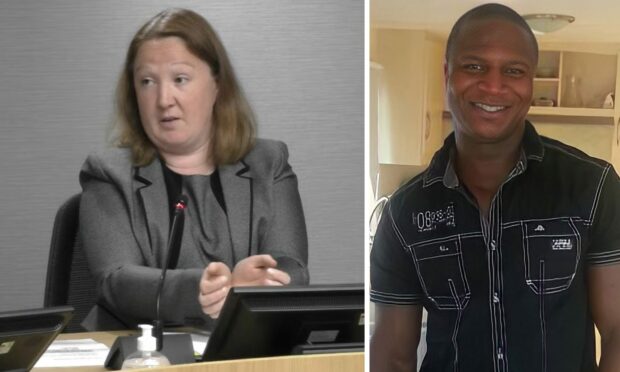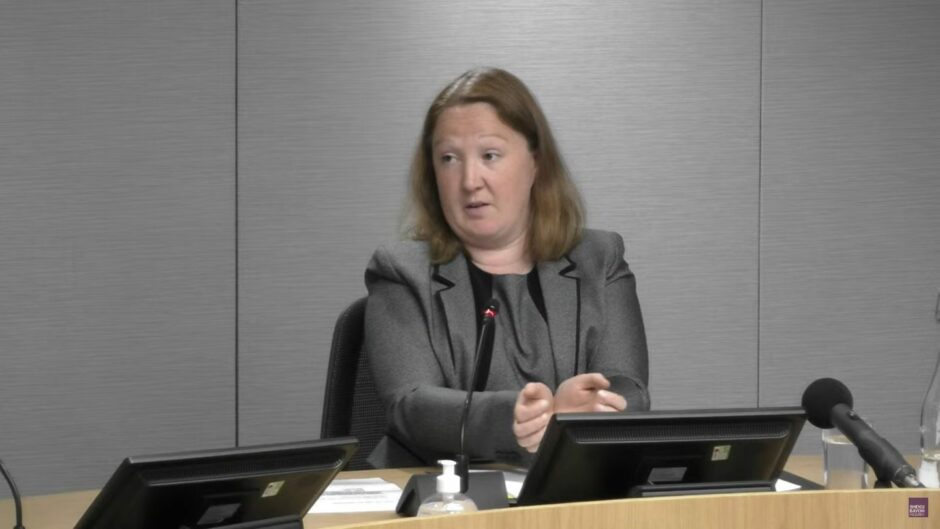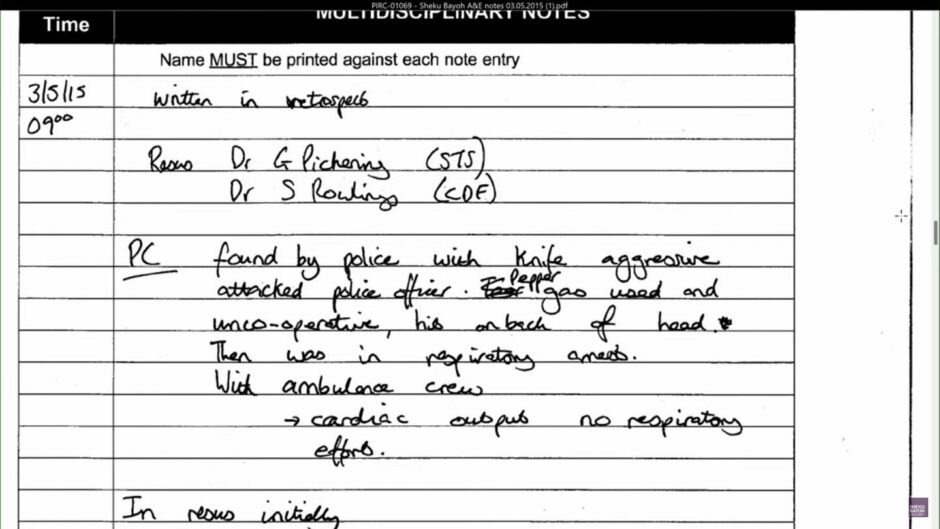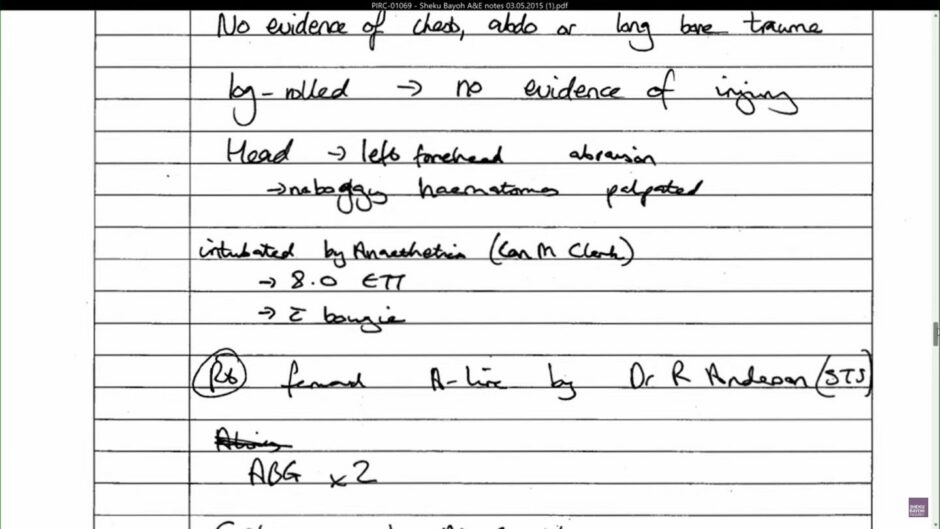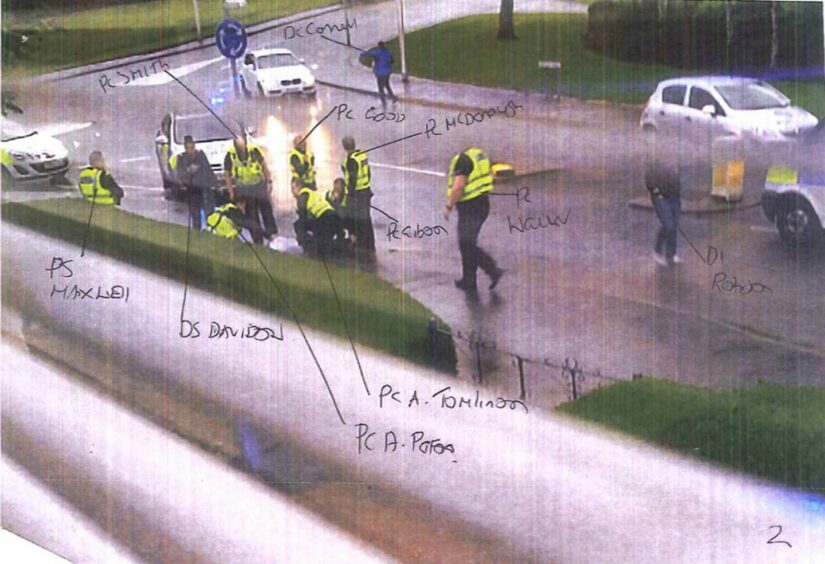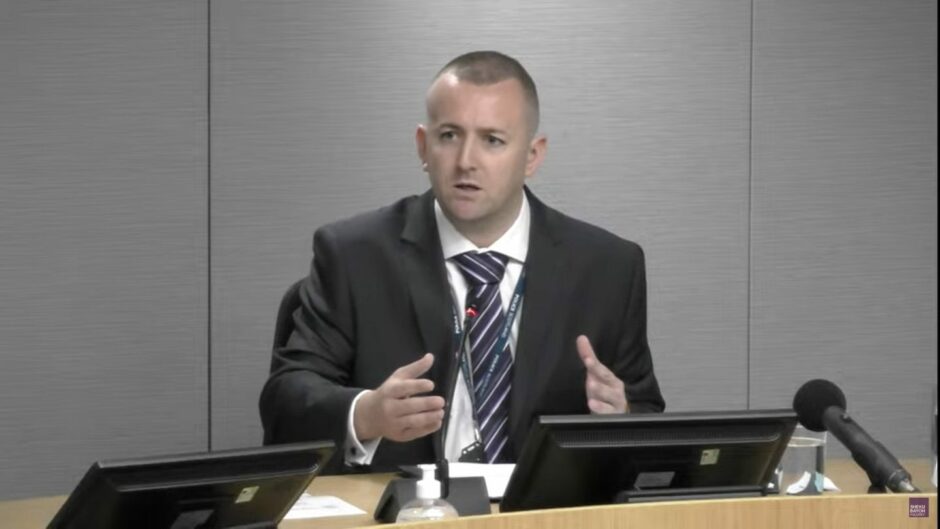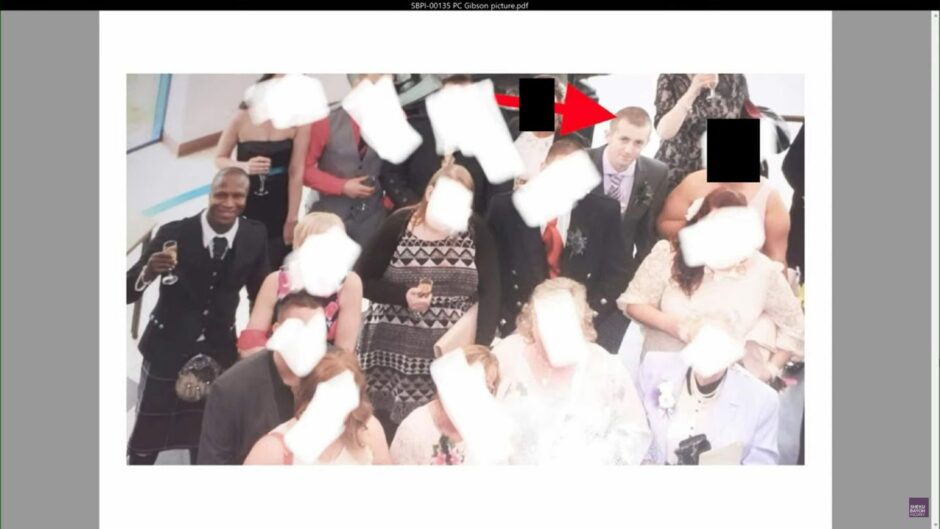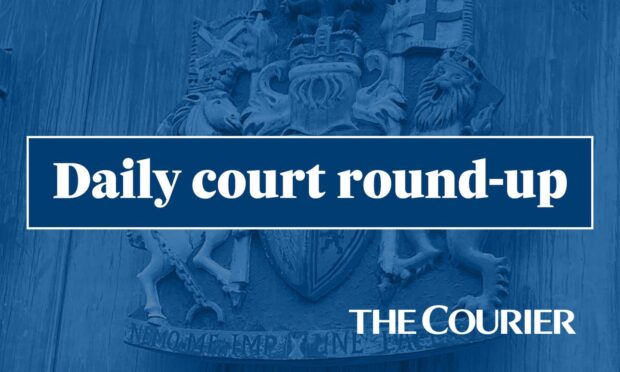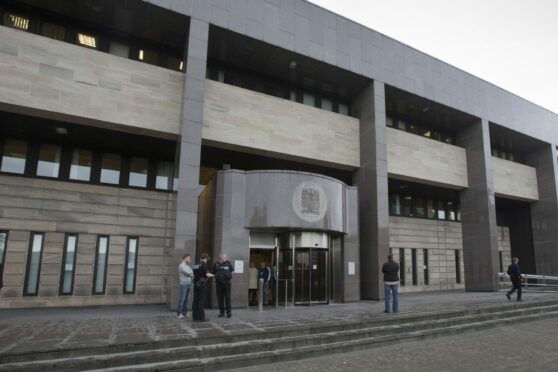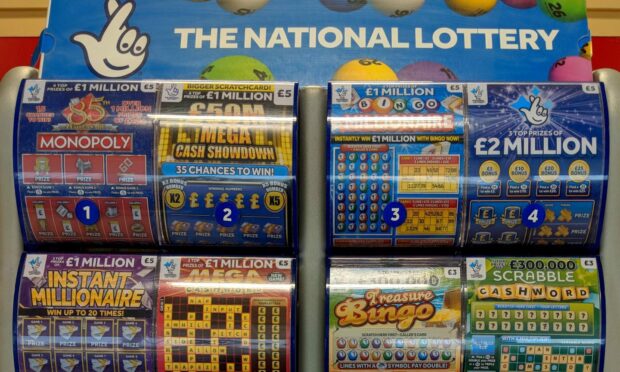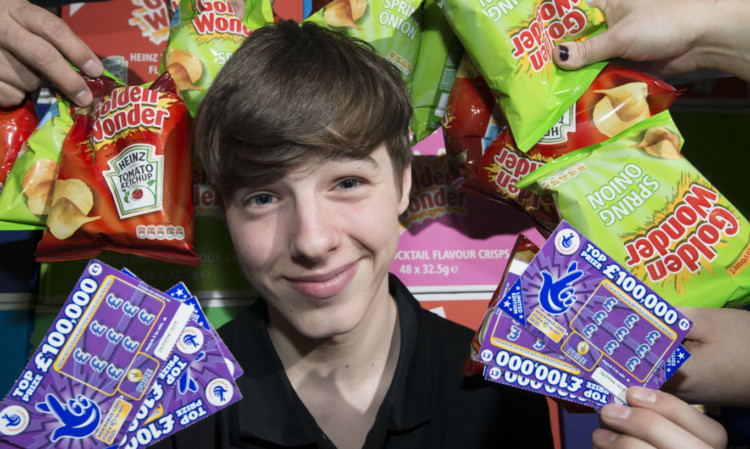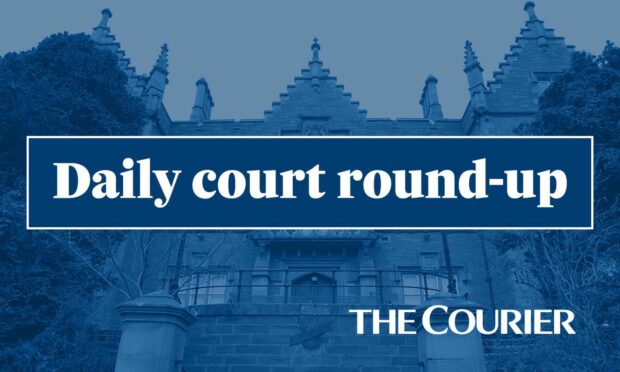A doctor involved in the resuscitation of Sheku Bayoh said leaving him in handcuffs would have hindered proper CPR.
Dr Gillian Pickering, a consultant in emergency medicine, said the outcome could have been different had the cuffs been removed earlier.
The inquiry also heard how a police officer involved in the restraint of Mr Bayoh was pictured at a wedding with him two years before his death.
PC Daniel Gibson said he may have sat at the same table as Mr Bayoh.
Chest compressions
Dr Pickering told the public inquiry into Mr Bayoh’s death effective compressions would have been difficult due to the placement of his arms.
On Mr Bayoh’s arrival in A&E at Kirkcaldy’s Victoria Hospital a police officer offered to remove the restraints but had he not done so, she would have asked, she said.
Dr Pickering, who was a registrar at the time, removed the leg restraints herself.
Dr Pickering said: “I remember him being a very big man.
“I remember he had his hands in front of him on his chest, cuffed and I remember there being a mark on his forehead.
“He came over onto our trolley and we started doing what we had to do.”
Mr Bayoh died in custody in Kirkcaldy on May 3 2015.
Good access needed for compressions
Asked by Laura Thomson, junior counsel to the inquiry, if the outcome for Mr Bayoh would have differed had handcuffs had been removed while police carried out CPR, she said: “It could have.
“The gentleman was a big guy and his arms were big and they were across his chest.
“To do good, effective CPR you need to be able to get good access to the chest to do good compressions.
“The police are trained in doing CPR and will be doing as good compressions as they can, as opposed to someone who’s not experienced in it.
“Whether the cuffs were in the way… it would have hindered really good compressions.”
She added: “He had a big chest and his hands were right across and over the front of his body so that space there (on his chest) where I need to put my hand to compress, would be small.
“If the hands are cuffed you might not be able to get your hand in there very well.”
Broken rib unlikely to be from CPR
The inquiry also heard Mr Bayoh had a fracture to his first rib, which is located under the collar bone.
Dr Pickering said she would not expect this rib to be broken by CPR on a young, healthy individual.
Medics gave Mr Bayoh three shocks and administered multiple doses of adrenaline but were unable to revive him.
Dr Pickering said as part of her initial assessment she also checked to see if Mr Bayoh had a fractured skull.
He did not.
She said she also considered whether drug use had caused Mr Bayoh’s cardiac arrest.
“From the little bit I’d been told about being aggressive on scene and then suddenly collapsing with respiratory arrest then going into cardiac arrest does make me thing ‘has he taken anything on board?’.
“So drugs were in my head as a potential cause.”
She said naloxone had been administered to no effect.
Race-related medical condition considered
Due to Mr Bayoh’s identity being unknown at this point, Dr Pickering did not have access to his medical records.
She said due to his race, she had briefly considered whether he suffered a rare condition called sickle cell anaemia, more common in certain ethnic groups, including people of African descent.
It prevents the effective transport of oxygen around the body.
However Dr Pickering said: “Clinically it didn’t fit with the story.”
Dr Pickering told the inquiry she did not recall being told Mr Bayoh had been pinned by police in a “collapsed rugby scrum” but would have written it in her notes if she had.
She said: “It can be useful, because it depends if he was pinned face down or on his back.
“Sometimes if you pin face down it can cause asphyxiation – if they are pressed down they are not necessarily able to breathe properly.
“It wouldn’t have changed what I did but it would have given me a bit more information as to what potentially could have caused him to go into respiratory and cardiac arrest.”
Asked by Claire Mitchell QC, for the Bayoh family, if the combined 58-stone weight of the police officers could have been a more likely cause of the fractured rib, she replied: “It could, yeah.”
Wedding picture
The inquiry also heard how a police officer involved in the restraint of Sheku Bayoh was pictured at a wedding with him two years before his death.
A never-before-seen image was shown in which Mr Bayoh appeared with a group including PC Daniel Gibson.
The officer told the inquiry that he may even have sat at the same table during the 2013 celebration.
Mr Bayoh’s partner Collette Bell is understood to have been related to the bride.
PC Gibson also told the inquiry that the circumstances of the incident involving Mr Bayoh in May 2015 were “rare” and he had “never been to a call like that before”.
He said the unusual factors included the number of calls from the public, the fact the suspect was moving through streets and which colleagues had activated their emergency buttons.
He also said that he was not aware the call involved a black man prior to his arrival at Hayfield Road.
He said it was the first arrest of a black person in which he had been involved.
The inquiry before Lord Bracadale continues.
